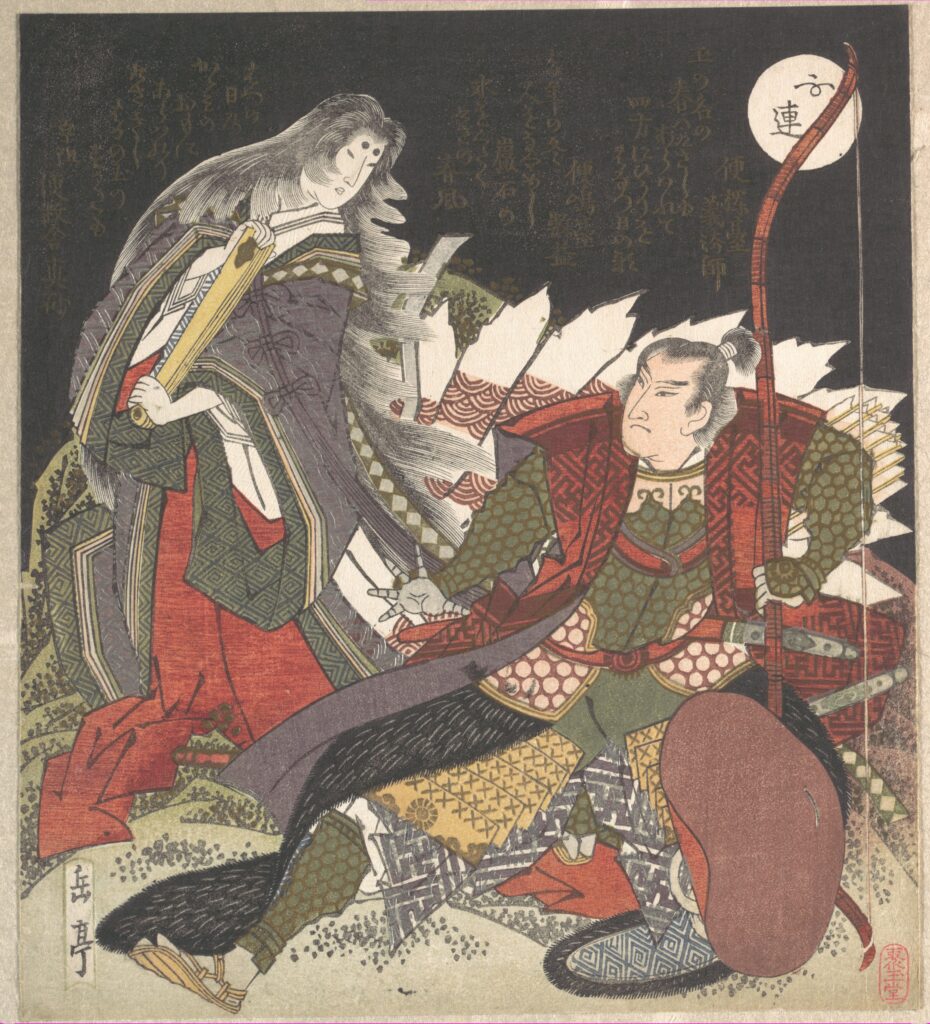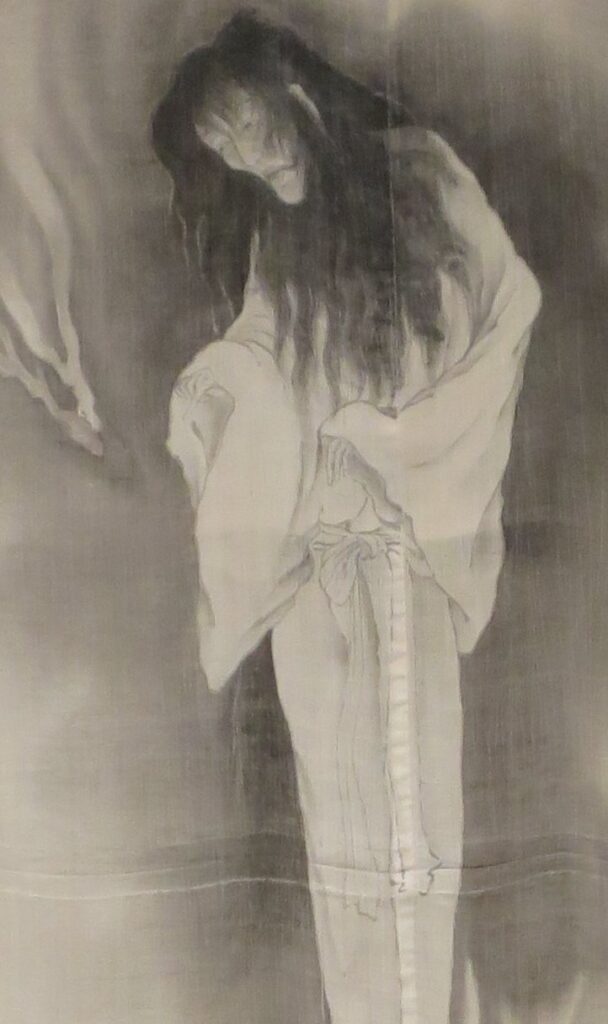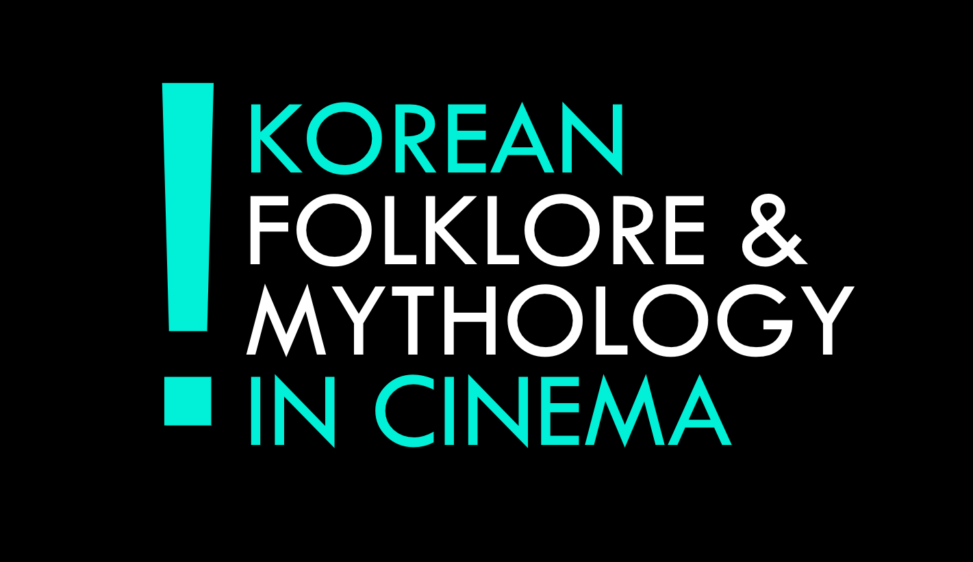For our final project in Elementary Korean II (KORE 2002) in the Fall 2019 semester, we were tasked with creating a 15-minute presentation detailing any aspect of Korean culture and language. Within my group, we decided to discuss popular Korean folklore and mythology found in cinema.

Gumiho (구미호)
For over a thousand years, folktales about fox spirits have been recorded in China, Korea, and Japan. In Korean folktales, a gumiho is a fox that transforms into a beautiful woman to seduce and devour unsuspecting men. A gumiho‘s main goal is to become human by absorbing energy from humans, this is done by eating the heart or liver. The tale of the gumiho is so popular that it continues to be regularly seen in Korean television, the most notable series being, “My Girlfriend is a Gumiho” (내 여자친구는 구미호) which aired in 2010.
Image Citation: Yashima Gakutei, 玉藻前と三浦介 “The Warrior Miura-no-suke Confronting the Court Lady Tamamo-no-mae as She Turns into an Evil Fox with Nine Tails” , CC BY CC0 1.0, via Wikimedia Commons

Gwishin (귀신)
Gwishin, also called wonhon (원혼) in some texts, are vengeful spirits that linger in the physical world. The spirits are typically portrayed as young, innocent women whose death was caused by a family conflict and/or sexual violence. Gwishin are known to appear in many places but most commonly found in abandoned areas (i.e.: schools, buildings, houses, etc.). Gwishin are a popular cliché of Asian cinema and television, appearing in several variations as the vengeful female ghost.
Image Citation: Hiart, Untitled, CC BY CC0 1.0, via Wikimedia Commons

Goblins (도깨비)
Goblins or dokkaebi (도깨비) are legendary creatures from Korean mythology and folklore that possess supernatural powers and abilities. Legends describe dokkaebi in many forms, common features including horns, bulging eyes, long sharp teeth, and long claws. Considered harmless, dokkaebi are mischievous and love to play tricks on humans. In some cases, dokkaebi challenge humans to Korean wrestling called ssireum (씨름). Dokkaebi also possess magical items such as the “goblin hat” (도깨비 감투) which grants the wearer invisibility, the “goblin bat/mallet” (도깨비 방망이) which can summon and act as a magical wand, and goblin fire, a glimmering blue flame. In recent Korean television, dokkaebi are depicted as handsome and mysterious men, the most notable series being, “Guardian: The Lonely and Great God” (쓸쓸하고 찬란하神- 도깨비) which aired in 2016.
Image Citation: Utagawa Kuniyoshi 歌川国芳, Untitled “Ushiwaka (Minamoto no Yoshitsune) and Goblins Attack Benkei on Gojō Bridge”, Public Domain, via Wikimedia Commons
Grim Reaper (저승사자)
In Korean mythology, the equivalent of a Grim Reaper is the “Netherworld Emissary” called jeoseung-saja (저승사자). The Korean Grim Reaper is a psychopomp – an escort of souls (both good and bad) – from the physical world to the netherworld. Usually depicted as a human male, he is personified to be wearing a black hanbok (한복), Korean traditional dress. Jeoseung-saja is a stern and ruthless bureaucrat who works under the command of King Yeomna (염라), the fifth of the ten kings of the underworld. Completely dedicated to his job, he guides departed souls along the Hwangcheon Road (황천길), the road that leads to the afterlife. In recent television, jeoseung-saja is depicted as a man with a black suit, the most notable series being Lee Dong-wook in “Guardian: The Lonely and Great God” aired in 2016 or Song Seung-heon in “Black” which aired in 2017. Unfortunately, I could not find any images under a Creative Commons license to further demonstrate my point, however, a good visual explanation is Hyowon Park’s short illustrated comic, linked here.
Works Cited
“Creatures of Korean Folklore.” SnackFever, https://snackfever.com/blogs/magazine/creatures-of-korean-folklore. Accessed 6 Dec. 2019.
Hovanec, Kyle. “Korea Haunt: The Most Famous Korean Ghosts.” SeoulSync, 26 Oct. 2015, http://seoulsync.com/culture/traditional/famous-korean-ghosts.
Klepeis, Alicia Z. Goblins. Cavendish Square Publishing, LLC, 2015.
Korea), The National Folk Museum of Korea (South. Encyclopedia of Korean Folk Beliefs: Encyclopedia of Korean Folklore and Traditional Culture Vol. II. 길잡이미디어, 2014.
Korean Folklore – Goblins and Other Beings | Sageuk: Korean Historical Dramas. https://koreanhistoricaldramas.com/korean-folklore-goblins-and-other-beings/. Accessed 23 Nov. 2019.
Ladner, Mimsie. Who’s Who: Korean Ghosts, Goblins, and Gumiho. http://www.myseoulsearching.com/2013/10/korean-ghosts-goblins-gumiho.html. Accessed 23 Nov. 2019.
Lee, Sung-Ae. “Lures and Horrors of Alterity: Adapting Korean Tales of Fox Spirits.” International Research in Children’s Literature, vol. 4, no. 2, Dec. 2011, p. 135.
Overview – Korean Folk Beliefs – Encyclopedia of Korean Folk Culture. http://folkency.nfm.go.kr/en/dic/3/summary. Accessed 23 Nov. 2019.
Peirse, Alison, and Daniel Martin. Korean Horror Cinema. Edinburgh University Press, 2013. EBSCOhost, https://search.ebscohost.com/login.aspx?direct=true&AuthType=ip,shib&db=nlebk&AN=573001&site=eds-live&scope=site&custid=asc1.
Note: Please note the images above are traditional Japanese artworks NOT Korean artworks. It is very difficult to find traditional Korean artworks under Creative Commons licensing, however, the illustrated images are similar to Korean depictions of said myths and/or folklore.
